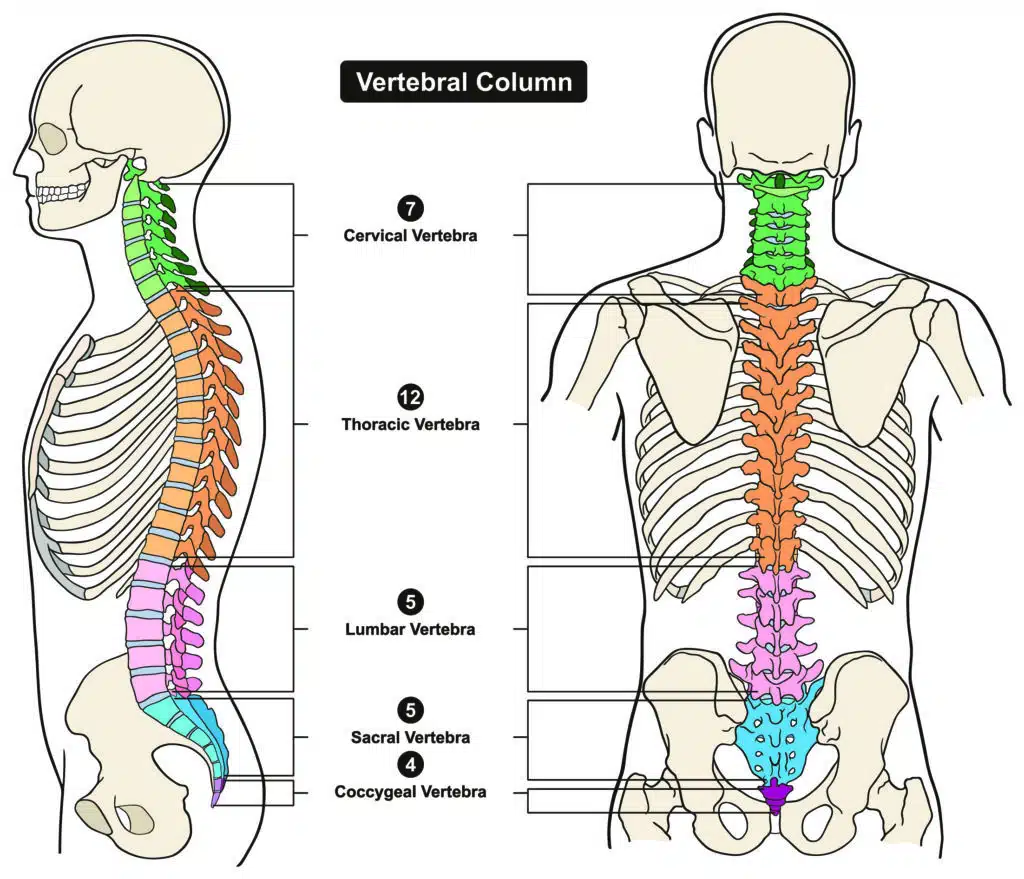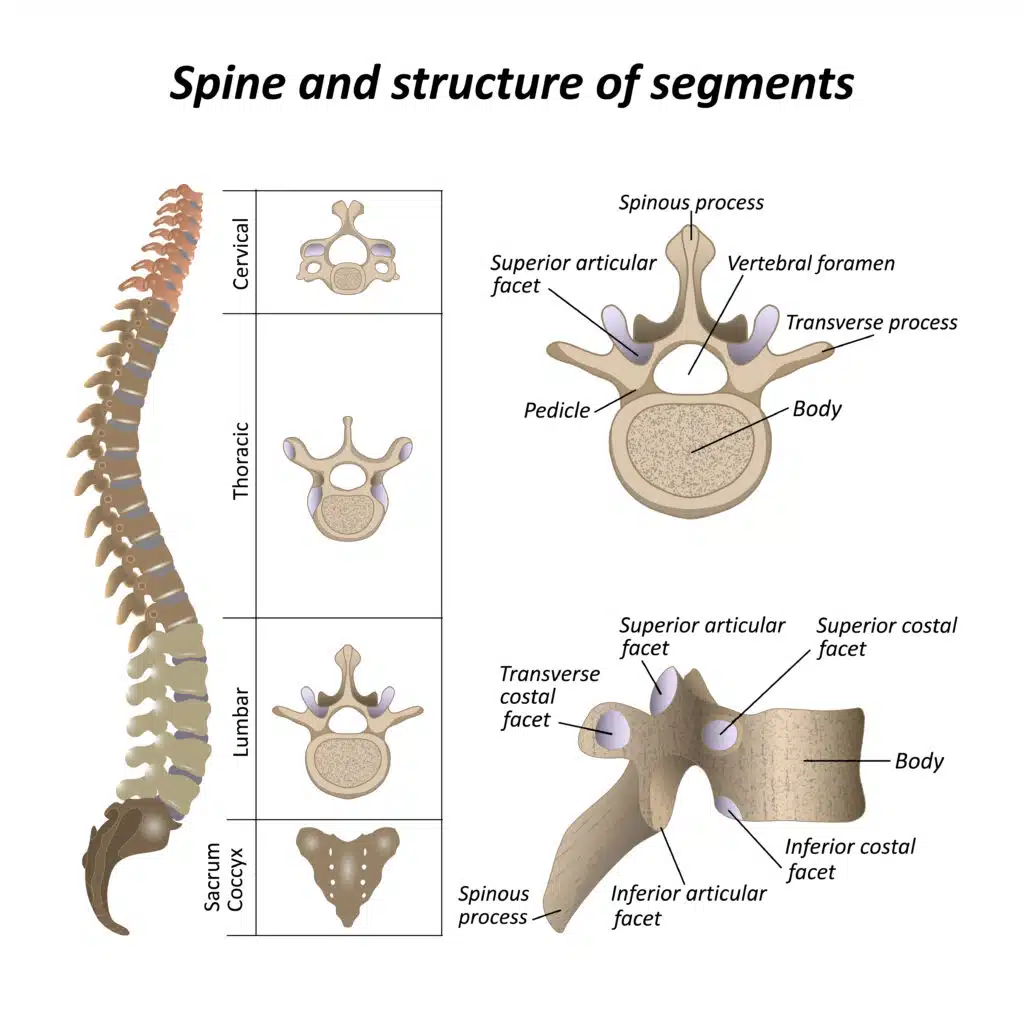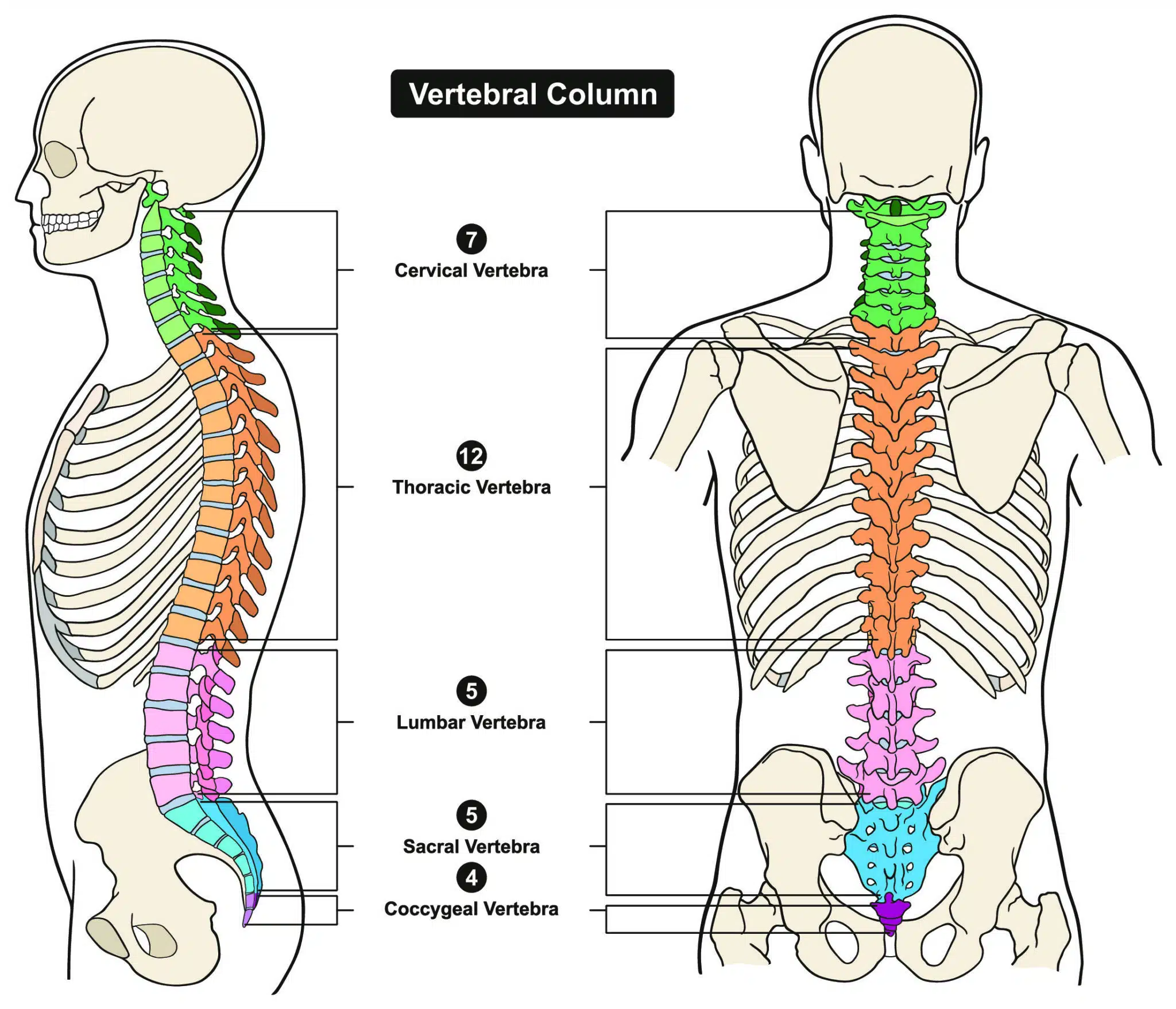Your spine is the body’s central support structure which provides stability and flexibility while also protecting the spinal cord and nerves.
Spinal Column and Structure of the Spine
The spinal column, also known as the backbone or vertebral column, is made up of 33 individual bones called vertebrae. The vertebrae are stacked on top of each other and separated by intervertebral discs, which act as shock absorbers. The vertebrae provide structural support for the body but also protects the spinal cord, which runs through an opening in each vertebra called the vertebral foramen.
The vertebrae are divided into different regions based on their location in the spine:
- Cervical vertebrae: These are the vertebrae in the neck region and are numbered C1 to C7. They are smaller and more flexible than the other vertebrae, allowing for a greater range of motion in the neck.
- Thoracic vertebrae: These are the vertebrae in the mid-back region and are numbered T1 to T12. They are larger and more rigid than the cervical vertebrae and help to support the weight of the upper body.This region is attached to the rib cage and helps to protect the heart and lungs.
- Lumbar vertebrae: These are the vertebrae in the lower back region and are numbered L1 to L5. They are the largest and strongest of the vertebrae and bear the majority of the body’s weight.
- Sacral vertebrae: These are the vertebrae in the pelvis region and are fused together to form the sacrum.The sacrum and the coccyx (tailbone) form the pelvic region and support the weight of the upper body.
- Coccygeal vertebrae: These are the vertebrae at the very bottom of the spine and are also fused together to form the coccyx, also known as the tailbone.

Vertebrae: The building Blocks of the Spinal Column
A vertebra is one of the 33 individual bones that make up the spinal column. Each vertebra is separated from the other by an intervertebral disc, which acts as a shock absorber.
The parts of a vertebra are:
- Body: The main part of the vertebra that provides support for the spinal column.
- Vertebral arch: The bony arch that surrounds the body and extends to the back of the vertebra.
- Spinous process: A bony projection from the vertebral arch that can be felt through the skin as the spine. The spinous process is for muscle attachment and to increase the surface area for articulation with adjacent vertebrae.
- Transverse process: Bony projections from the vertebral arch that extend laterally from the body and are used for muscle attachment.
- Articular facets: Smooth, flat surfaces on the processes of the vertebral arch that allow for movement and articulation with adjacent vertebrae.
- Intervertebral foramen: A small opening between adjacent vertebrae that allows spinal nerves to pass through.

Conditions that Affect the Bones of the Spine
The bones of the spine can be affected by several conditions, including:
- Spinal stenosis: Narrowing of the spinal canal that can compress the spinal cord and nerve roots, causing pain, numbness, and muscle weakness. This can be caused by bony overgrowths called osteophytes.
- Spondylolisthesis: A condition in which one vertebra slides out of place on the vertebra below it, causing pain and instability.
- Scoliosis: A lateral curvature of the spine that can cause pain, decreased mobility, and a visible deformity.
- Osteoporosis: A condition in which the bones become weak and brittle, increasing the risk of fractures, including spinal fractures.
- Vertebral fractures: A break in one of the bones of the spinal column, which can be caused by trauma or osteoporosis.
- Kyphosis: An excessive curvature of the thoracic spine, which can cause a hunched appearance and discomfort.
It is important to seek medical attention if you experience pain or discomfort in the spine or have any other symptoms that may be related to a spinal problem. Early diagnosis and treatment can help to prevent the progression of these conditions and reduce the risk of long-term complications.
